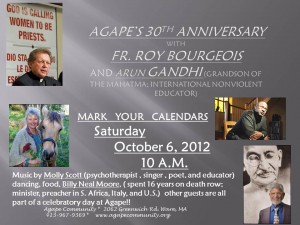
Our obsession with terrorism has driven many of us into such a frenzy of fear that it often borders on the ridiculous. Last year Lynnea Bylund posted to her Catalyst blog Time To Toss The Terrorist Fear Blather, wherein she correctly pointed out that, “… peanuts and bathtub drownings are by far more dangerous to Americans at home than terrorists,” statistically speaking. But the other day I encountered an even more fundamental variety of this fear.
I met a middle-aged gentleman from the upper middle class economic. He was very curious about my frequent travels and questioned me at length about a variety of places I had journeyed to. So I asked him: “Tell me about your travels?”
“Oh, I haven’t been anywhere outside the United States,” he said quite firmly.
“Why not? Don’t you like to travel?”
“Yes,” he said and added. “But I am afraid. All these terrorists stalking us Americans and I don’t want to die yet.”
“What are you talking about?” I asked. “Where are these terrorists?”
“Oh, all over the world,” he replied. And they are just waiting for Americans to leave the country so they can kill them.”
I was so shocked by this bald statement that I blurted out: “That is unadulterated BS! I think there are far more terrorists in our cities and our own American streets than in the rest of the world.”
“What do you mean?,” he asked quite shocked.
 For generations human beings around the world worked hard to attain peace but their efforts ended mostly in heart-breaking futility leading to pessimism and worse. There is a wide-spread belief now that peace is unattainable and that civilization is doomed to perish by violence. When peace appears to be won through violence it is very temporary because violence subjugates the opponent. When we seek to control someone through fear of punishment or violence or superior force that control remains only as long as the dominant force is able to exert fear. Since human beings realized in pre-historic times that they could survive in jungles only by using force they developed a whole “culture of violence” that gradually came to dominate every aspect of human life. Our language, our behavior, our relationships, our attitudes, in short almost everything about the human being is now conditioned by the “culture of violence.” Generations have now come to believe that violence is human nature and one just has to live with it. I hope by the time you finish reading this chapter you will be convinced that violence is not human nature.
For generations human beings around the world worked hard to attain peace but their efforts ended mostly in heart-breaking futility leading to pessimism and worse. There is a wide-spread belief now that peace is unattainable and that civilization is doomed to perish by violence. When peace appears to be won through violence it is very temporary because violence subjugates the opponent. When we seek to control someone through fear of punishment or violence or superior force that control remains only as long as the dominant force is able to exert fear. Since human beings realized in pre-historic times that they could survive in jungles only by using force they developed a whole “culture of violence” that gradually came to dominate every aspect of human life. Our language, our behavior, our relationships, our attitudes, in short almost everything about the human being is now conditioned by the “culture of violence.” Generations have now come to believe that violence is human nature and one just has to live with it. I hope by the time you finish reading this chapter you will be convinced that violence is not human nature.

 For Immediate Release, London, UK – Jul 26, 2012 –
For Immediate Release, London, UK – Jul 26, 2012 –  While in Port-Au-Prince, Arun Gandhi also visited with Haiti’s First Lady, Premiere Dame Sophia Martelly to discuss the current situation in Haiti and begin a dialogue on how Mahatma Gandhi’s philosophy of nonviolence can be implemented in the ongoing development work following the 2010 earthquake.
While in Port-Au-Prince, Arun Gandhi also visited with Haiti’s First Lady, Premiere Dame Sophia Martelly to discuss the current situation in Haiti and begin a dialogue on how Mahatma Gandhi’s philosophy of nonviolence can be implemented in the ongoing development work following the 2010 earthquake.
